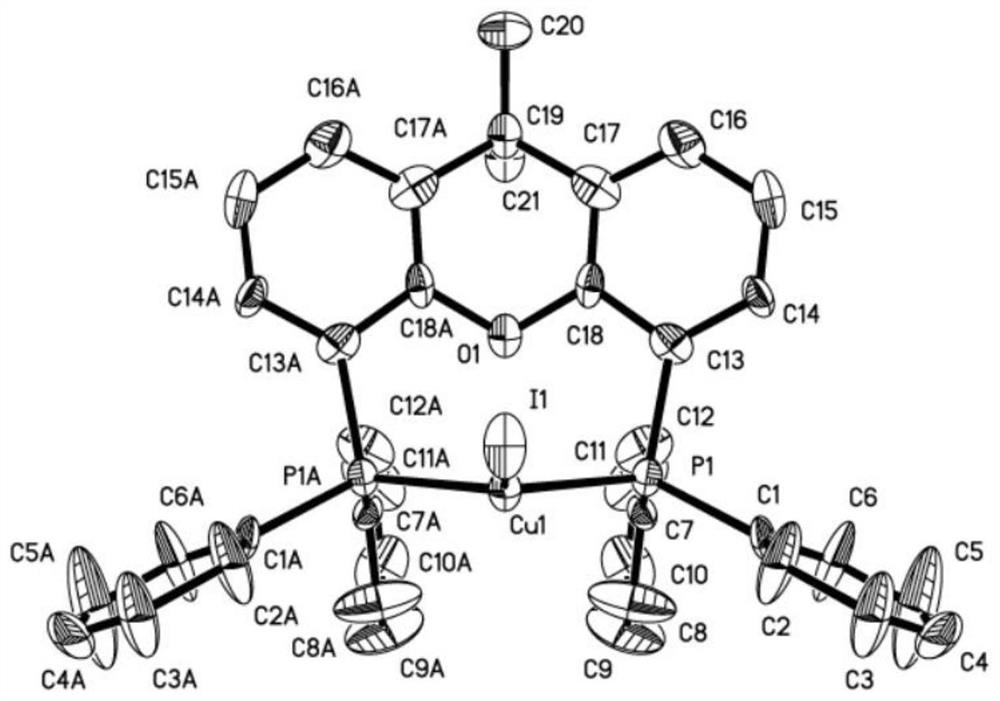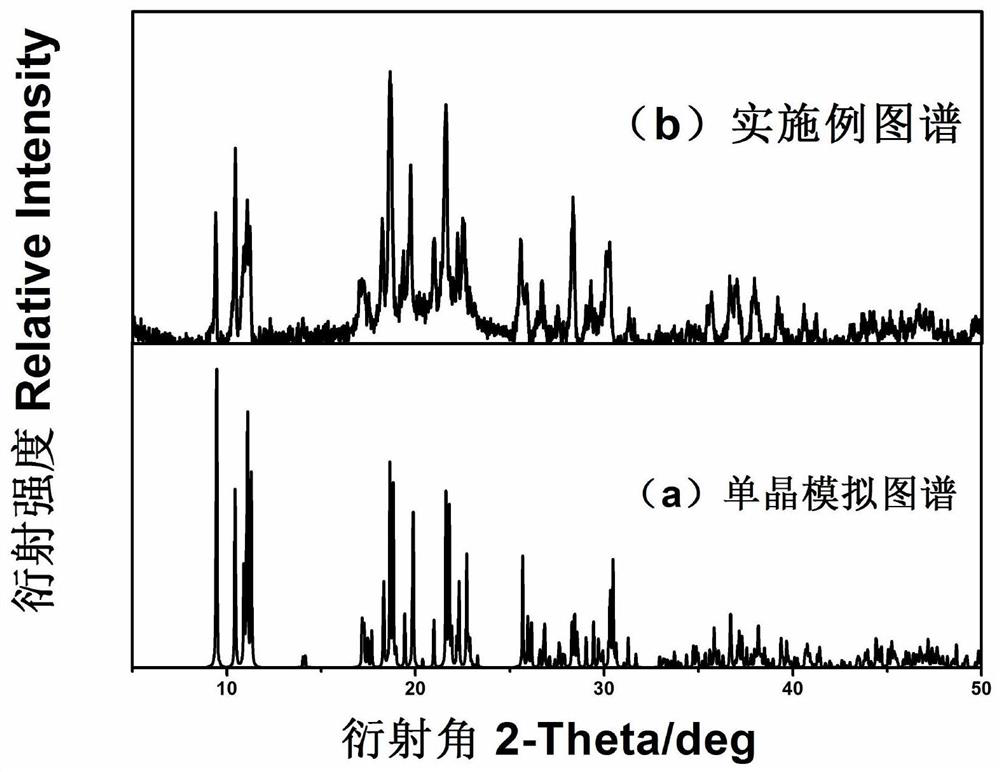A voc fluorescent sensing material based on cuprous complexes
A technology of fluorescent sensing and complexes, applied in luminescent materials, luminescent coatings, fluorescence/phosphorescence, etc., can solve the problems of ignoring the actual sensing detection quantification, low cost, and high price, and achieve cheap purification, low production cost, and inhibition The effect of non-radiative attenuation
- Summary
- Abstract
- Description
- Claims
- Application Information
AI Technical Summary
Problems solved by technology
Method used
Image
Examples
Embodiment 1
[0042] Preparation of a large number of luminescent complex material Cu(Xantphos)I crystal powder samples: Weigh 0.037g (0.1mmol) of Cu(CH 3 EN) 4 PF 6 , 0.058g (0.1mmol) of Xantphos were dissolved in 5mL of dichloromethane and mixed, stirred to fully undergo a coordination reaction; then weighed 0.017g (0.1mmol) of KI and dissolved it in 5mL of acetonitrile Then slowly add to the above reaction solution; raise the temperature to start reflux, and maintain the reflux state for 1 hour, then transfer to gradually reduced pressure rotary evaporation, after complete evaporation, add water and ethanol to wash in sequence, and the light yellow crystal powder obtained after drying is the product (see attached image 3 ), the yield was 94% (calculated as Cu). Spectral tests found that the material strongly absorbs ultraviolet light (see attached Figure 4 ), and can emit strong fluorescence (see attached Figure 5 ).
Embodiment 2
[0044] Synthesis of single crystal of luminescent complex material Cu(Xantphos)I: Weigh 0.037g (0.1mmol) of Cu(CH 3 EN) 4 PF 6 , 0.058g (0.1mmol) of Xantphos, 0.017g (0.1mmol) of KI, were dissolved in 3mL of dichloromethane, 2mL of dichloromethane and 5mL of acetonitrile; Cu(CH 3 EN) 4 PF 6 Mix and react with Xantphos solution, stir to make the coordination reaction fully occur, and obtain a light yellow clear solution; after filtering, cover the upper layer of the solution with acetonitrile solution of KI to make it slowly diffuse and react; after standing for a few days, there will be light yellow block crystals Precipitate. Select a light yellow block crystal with a size of 0.26mm*0.20mm*0.16mm for X-ray single crystal structure test. Single crystal structure analysis results, the molecular structure diagram of the compound is shown in the attached figure 1 , and its unit cell packing structure is shown in the attached figure 2 .
Embodiment 3
[0046] Preparation of fluorescent sensing film and its atmosphere response: Weigh 0.1g of PMMA (polymethyl methacrylate, glass transition temperature: 105°C) to completely dissolve it in 2mL of dichloromethane, and the solution is colorless, clear and transparent. Weigh 0.01g of the complex Cu(Xantphos)I, dissolve it in 2mL of dichloromethane, and remove the insoluble matter after thorough stirring. The complex solution was slowly added to the PMMA solution, and the solution was light yellow and clear. Spin-coat (1200rad / min) on a clean quartz plate and dry (60°C, 30min) to obtain a fluorescent sensing film sample. The sensing film sample is placed in a VOC atmosphere, and the fluorescence spectrum is tested after a certain period of time. The test found that the sensing film sample also has a certain fluorescence response performance to the vapors of DMF, triethylamine, methanol, n-butanol, acetonitrile, etc. (see attached Figure 7 ). In particular, the test found that th...
PUM
| Property | Measurement | Unit |
|---|---|---|
| emission peak | aaaaa | aaaaa |
Abstract
Description
Claims
Application Information
 Login to View More
Login to View More - R&D
- Intellectual Property
- Life Sciences
- Materials
- Tech Scout
- Unparalleled Data Quality
- Higher Quality Content
- 60% Fewer Hallucinations
Browse by: Latest US Patents, China's latest patents, Technical Efficacy Thesaurus, Application Domain, Technology Topic, Popular Technical Reports.
© 2025 PatSnap. All rights reserved.Legal|Privacy policy|Modern Slavery Act Transparency Statement|Sitemap|About US| Contact US: help@patsnap.com



